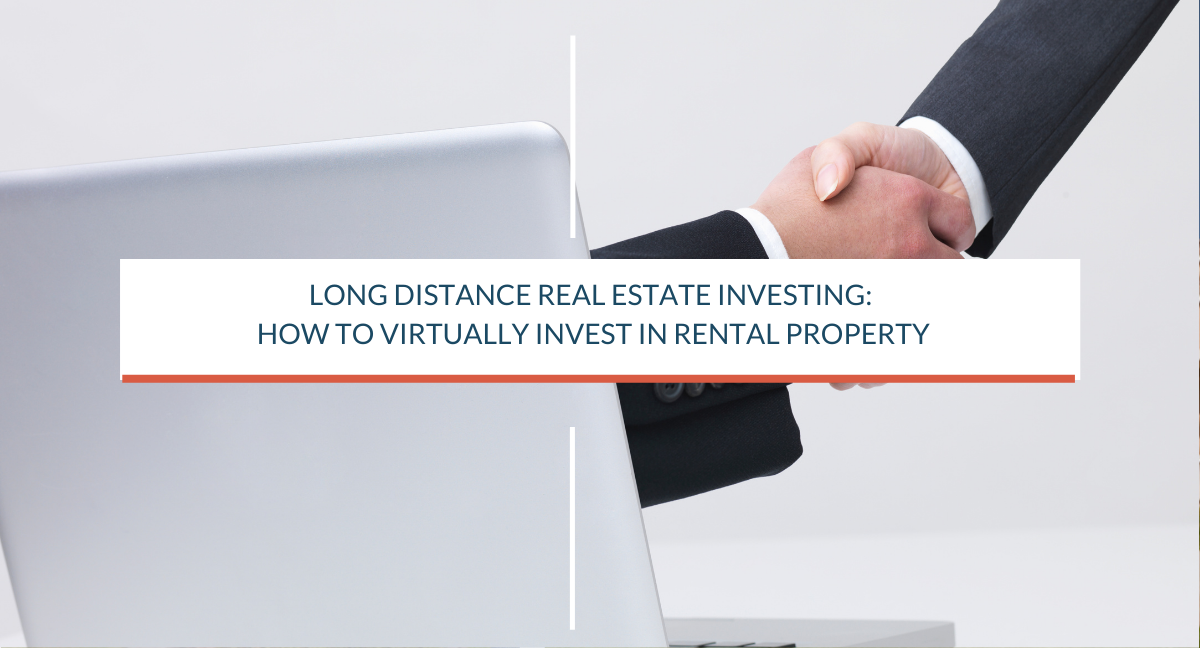Long Distance Real Estate Investing: How to Virtually Invest in Rental Property
Long distance real estate investing (also called virtual real estate investing) has definitely gained popularity recently, due to the changes with how everyone is doing business. There has been a big reset with how people work: from home, social distancing, using tools and technology.
The appeal to run a home-based business with real estate and own or flip property across markets seems much more acceptable (with buyers and sellers) and the global mentality of doing business, together with the right tools and technology, make this way of doing business not only a doable endeavor, but the preferred way of real estate investing. Are you looking for a Real Property Management Service? contact us now!
Why Long Distance Real Estate Investing?
Wholesale, Fix and Flip or Buy and Hold. They are all strategies that can work with long distance real estate investing. But why would someone consider doing this?
- Better markets – may be you live in a highly priced or competitive (saturated) market. Other markets might offer a lower point of entry (cost as referring to properties, but also marketing costs to get leads,) and offer a higher ROI (return of investment) of money, but also time and effort.
- Diversification – you might be interested in investing in different types of property from your local market: mobile homes, or vacation rentals, for example. It is always a good idea not to put “all your eggs in one basket” as it pertains to areas, but also type of investments.
- Exponential growth – you can test different markets and see where your time and money are better spent for real estate investing. You can focus on the markets that will yield the higher ROI for exponential growth of your real estate business or portfolio.
5 Tips for Long Distance Real Estate Investing
- Research the local market – definitely do your due diligence and research on the area, especially as it comes to economic growth, supply and demand, turnover of property inventory, and so on. A good resource is the website at National Association of Realtors – Research and Statistics.
- Leads – how do you find your leads? Using different platforms and tools, nowadays it is easier than ever to find and process a lot of leads. My recommendation is to focus on quality versus quantity. The best leads are the ones you find yourself through county court records, for example, instead of buying lists that are highly used and targeted by all investors who access the same lists.
- Build a team – you need “boots on the ground” to show properties, take photos, manage your properties (if you plan to own rentals), maintain or rehab your properties. Also you want to connect with a title company or real estate attorney (if you are dealing in an attorney closing State,) that are familiar and willing to do long distance closings.
- Become informed of local State laws – either you wholesale, fix and flip or buy and hold, you need to be aware of the local laws and property taxes. For instance, in Illinois you have to be licensed to wholesale, and property taxes in some states or even some areas within a state are much higher than average.
- Due diligence – know as much as you can about the local real estate market. If you are investing in rentals, what are acceptable rental rates? What is the average CAP (Capitalization) rate that most landlords expect? What is the demand and resale value and average DOM (Days On the Market?) What are the rules for contractors, permits and private funding?
Conclusion
Long distance real estate investing can be very lucrative. The diversification and being able to get higher returns because of working in less competitive markets are alone reasons to consider long distance real estate investing.
The biggest recommendation that I have is to study the market of interest and perform proper due diligence. Then you can safely and exponentially grow across markets.
If you are interested in learning more about real estate investing, including Long Distance, please download the Free Ebook:
>> The 7 Simple Step System <<
 Subscribe to our podcast
Subscribe to our podcast 


